Andy Warhol & Louis XIV: Sun Kings
STEPHEN SMITH, the presenter of A Day in the Life of Andy Warhol, compares the courts of Warhol and the original Sun King, Louis XIV - casting The Factory as a 1960s version of the Palace of Versailles.

Andy Warhol seemed to come from the future - from round about now, in fact, and that sounds right when you consider how pervasive his influence remains today.
His work is everywhere. Andy is the poster boy of - well, posters, for a start. He rhapsodised about mechanically reproduced art, mass production and assembly lines.
Try this for size: Andy Warhol as the Louis XIV of New York, the man in the sunglasses as a latterday Sun King
Not for nothing was his studio known as the Factory. The painter - over and over again - of Elvis and Marilyn, of Brillo Pad boxes and Campbell's soup cans, appeared to foresee celebrity culture and the rise of the brand.
But if art history teaches us anything - those dusty accounts of Old Masters, Impressionists and the rest - it's that it's as elastic as a muse's garterbelt. Go ahead and look at Andy as the painter of modern life, if you like, but you're also entitled to consider him as a much more traditional, even atavistic, figure.
Try this for size: Andy Warhol as the Louis XIV of New York, the man in the sunglasses as a latterday Sun King.
Before you complain to the Culture Department at this flagrant abuse of the licence fee, the analogy is not as fanciful as it first seems.
Both Louis and Andy were Catholics, they absolutely dominated their respective spheres of influence, and neither was ever seen in public without a wig. Andy adopted a rug because a childhood illness left him entirely hairless; in Louis's case, a venereal condition was spoken of, though seldom within royal earshot.
The French despot burnished his image with portraits and busts commissioned from artists of the calibre of Hyacinthe Rigaud and Bernini.
Andy did the job himself, of course - he is perhaps the most notable exponent of the self-portrait since Rembrandt - but he also retained the British photographer David McCabe as his personal shutterbug.
Andy with Mick and Bianca; Andy with the starlet Edie Sedgwick - McCabe's portfolio helped to establish Warhol as surely as Rigaud's florid likeness of Louis, carried in processions throughout France.
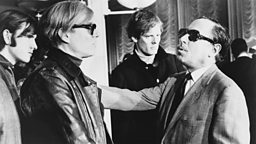
Victor Bokris, an Englishman from Brighton who worked at the Factory, told me it was like a court. To hear Bokris tell it, there was a 'jester', in the shape of Robert Olivo aka 'Ondine', who appeared in Warhol's films; a 'prime minister' in Gerard Malanga, who was involved in every aspect of Warhol's silkscreen painting and film-making. 'And Andy's presence was so powerful. It was everything.'
Andy's presence was so powerful. It was everythingVictor Bokris
As at the Palace of Versailles, a position in Andy’s bedchamber was highly coveted. This role fell to a teenager called Joseph 'Little Joey' Freeman, whose job was to roust Warhol out of bed every morning.
The unlikely pair bonded over a shared interest in hi fi, and soon Joseph was flunking high school in favour of the altogether more colourful education that the Court of King Andy had to offer.
It operated to a punctilious timetable that the Sun King would have recognised. After Andy's toilet - a bowl of cornflakes taken in his underpants - Joseph would escort him outside onto the sidewalk and perform the chivalrous office of hailing a cab for him.
Louis XIV insisted that the French aristocracy decamp from Paris to Versailles, where many of them endured cramped billets in rookeries under the eaves, while paying heavily for the privilege.
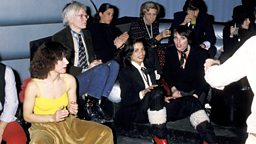
Those of Warhol's acolytes who didn't actually live at the Factory might just as well have done so, considering the long hours they clocked up there. He kept them on meagre stipends and shamelessly stole their ideas.
Nothing pleased Andy more than talking a wealthy socialite or VIP into sitting for a portrait
After a hard day's silkscreening, and shooting 'screen tests' to audition people for his movies, Warhol entertained like an absolute monarch. He was watchful, calculating.
As the memoirs of his associate Bob Colacello make clear, nothing pleased Andy more than talking a wealthy socialite or VIP into sitting for a portrait. Unless it was that same high net-worth individual also agreeing to appear in Warhol's own upscale scandal sheet, 'Interview', too.
One of the best stories in Colacello's book recounts a quixotic trip that Warhol made to Rome in search of Liz Taylor. He was going to act in one of her films, and to persuade her to sit still long enough to have her Polaroid taken.

Liz was invited to lunch at Warhol's villa. She turned up late, got loaded, left her food untouched, had a long and semi-hysterical phone call with Richard Burton, sobered up and invited herself to stay to dinner, didn't touch that either, and locked herself in a bathroom until her doctor arrived and drove her away without so much as a goodbye.
Only the Queen of Hollywood could subject King Andy to such a masterclass of lese majeste
Only the Queen of Hollywood, a ranking figure of the ancien regime, could subject King Andy to such a masterclass of lese majeste.
Louis XIV lives on in the work ethic and spangled interiors of every tinpot dictator. Meanwhile, the rest of us inhabit a Warhol-world of celebs, label envy and selfies. Après moi le deluge, indeed.
Stephen Smith presents A Day in the Life of Andy Warhol on BBC Four at 9pm on 25 August, and afterwards on BBC iPlayer. He is Culture Correspondent of Newsnight.

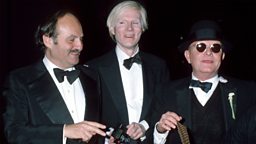
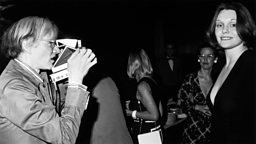
A Day in the Life of Andy Warhol
-
![]()
The Short Version
A preview film from Stephen Smith's search for the real Warhol.
-
![]()
On BBC Four
Clips and broadcast details for Stephen Smith's BBC Four programme on Warhol.
More Warhol
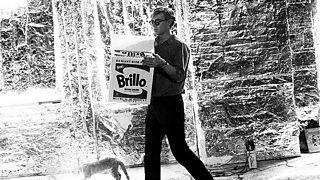
It was the perfect time to think silver. Silver was the future, it was spacey. The astronauts wore silver suits - Sheppard, Grissom and Glenn had already been up in them, and their equipment was silver too. And silver was the past - the silver screen, Holywood actresses photographed in silver sets. Maybe more than anything, silver was narcissism - mirrors were backed with silverAndy Warhol on the Silver Factory
Image: Billy Name
-
![]()
Superstars & Silver
Billy Name's iconic images from The Factory, 1964 - 70
-
![]()
When everyone could own a Warhol
Cover Star: Andy Warhol's 1950s album covers for hip jazz labels such as Blue Note.
-
![]()
Jeremy Deller on Warhol
Artist Jeremy Deller discusses with Alastair Sooke the imagery of violence in some of Warhol's work.

Pop Art Features
-
![]()
The Politics of Pop Art
A dissenting view from the global artists represented at The World Goes Pop exhibition at Tate Modern.
-
![]()
Pop Art's Road Trip
Alastair Sooke on the stark, understated gas station photographs of Ed Ruscha.
-
![]()
Did Scottish artists invent Pop?
Can Pop Art really trace its origins to the work of a couple of artists from Scotland?
-
![]()
Sun Kings
Stephen Smith compares the courts of Andy Warhol and the original Sun King, Louis XIV - with the Factory as a 1960s Versailles.
-
![]()
Pop Idents by Pop Icons
Watch the BBC Four Goes Pop! channel idents by Peter Blake, Derek Boshier & Peter Phillips.
-
![]()
What's Andy Doing Right Now?
Find yourself in the midst of a typical day for Pop Artist Andy Warhol in the mid-1960s.
-
![]()
Warhol's Polaroids
The genius behind the camera that enabled Andy's instant celebrity obsession.
-
![]()
The Power of Desire
Controversial British Pop Artist Allen Jones is the guide around his Royal Academy exhibition.
-
![]()
Dividing Opinion
A Career in Quotes: What the critics said about controversial British Pop Artist Allen Jones.
-
![]()
24 Hours with Andy Warhol
Follow Andy and his entourage as they tour London in 1970, meeting David Hockney and film critic Dilys Powell.
-
![]()
Cheese!
A fascinating look inside The Factory in 1965, as filmmaker and activist Susan Sontag visits while Andy is filming.
-
![]()
Cover Star
When Everyone Could Own a Warhol: Andy Warhol's 1950s album covers for hip jazz labels such as Blue Note.
-
![]()
Superstars & Silver
The Factory 1964-1970: Billy Name's iconic images of Warhol's Silver Factory, with the Velvets, Nico, Warhol superstars & Dali.
-
![]()
Heroes of German Pop
William Cook on the exquisite colours of German Pop at an exhibition in Frankfurt.
-
![]()
German Pop: In pictures
Artworks from the bold and brilliant pioneers who shaped Germany's 1960s pop art scene.
-
![]()
Transmitting Warhol
A video tour of last year's Andy Warhol exhibition at Tate Liverpool.


















